This Stunning European City Hosts Lavish Balls All Winter Long — and I Went to Learn How to Waltz
Vienna has an entire season dedicated to luxurious balls, here's how you can join the fun.
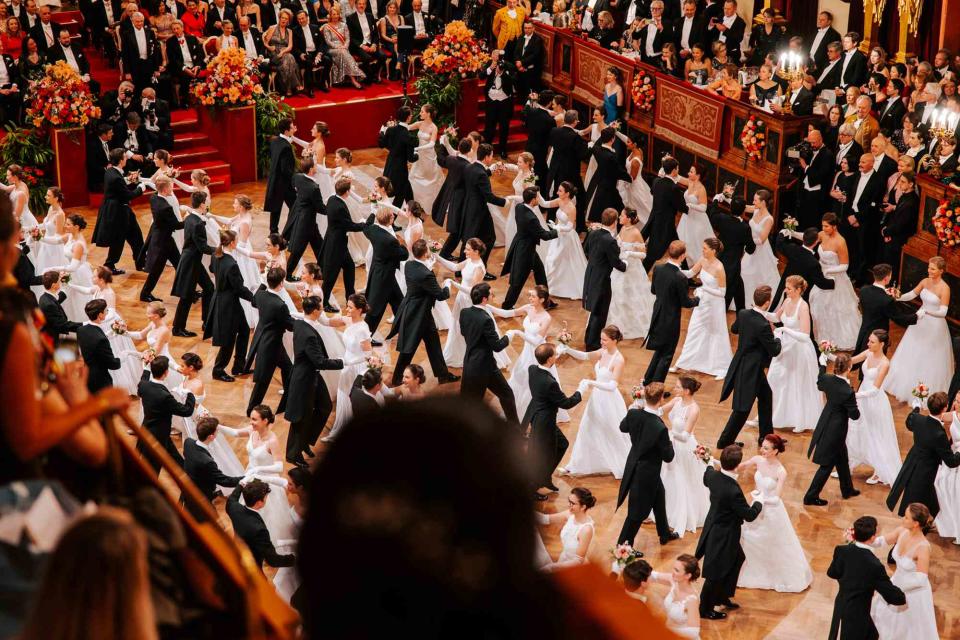
Paul Bauer
There was a fairy tale I loved as a little girl called “The Twelve Dancing Princesses.” It told the story of 12 princesses, all sisters, who lived under the harsh rule of their father, the king. He wanted to marry his daughters off, and until then, ensure they lived chaste, cloistered lives. Unbeknownst to the king, every night the princesses escaped the confines of their tower and traveled through magical realms: a forest of silver, a forest of gold, and a forest of diamonds, before sailing across a lake where they met 12 handsome princes at a ball. There they would dance through the night, only stopping when the dawn began to break, and their shoes were in tatters.
I adored this tale of faraway forests of magic and clandestine dancing. We all have a story like this, something that enters our subconscious in childhood and accompanies us through life. If we’re lucky, we’ll come to embody part of the tale that means so much to us — recreate it in some way. And if we’re very lucky, we’ll go to the scene of the story, whether the literal place or one that resembles an imaginary realm. For me, I wanted to one day go to a ball. And although not a princess, nor locked in a tower, I would travel through a land of silver to get there.
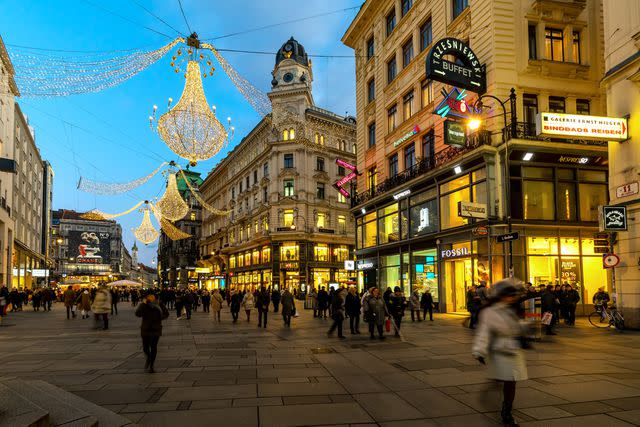
Getty Images
That silvery land was Vienna in the winter, when the city glitters in a pearly-gray light and welcomes an annual snowfall that feels more like fairy dust than a consequence of the season. I had come to fulfill my fairy tale, to attend the Vienna Philharmonic Ball.
I arrived in the city having never waltzed before, for waltzing had, perhaps unsurprisingly, not been a prerequisite of my suburban American childhood. But after over two pandemic years, where sweatpants and armchair travel had become the norm, I was ready to waltz, quite literally, to somewhere new and far from my comfort zone. I had come to the Austrian capital with the idea of balls swirling in my head.
The city exists both in a preserved state of beauty and on the cutting edge of modernity. The opulence of the Austro-Hungarian Empire and the art nouveau aesthetic are complemented by stellar public transportation and tap water that flows directly from the Alps. Perpetually at the top of the most livable cities in the world, Vienna’s streets and squares, and famous “Ring,” seem to move in rhythm with the three-fourths time of the city’s very own musical form: the waltz.
In Vienna, balls are a throughline of history, and dancing the waltz is a part of life — like riding a bike or learning to swim — rather than a revival of a cultural past. People have been dancing the waltz in Vienna for hundreds of years, but it wasn’t until the mid-19th century that waltzing wove itself irrevocably into the city’s culture. It started with Johann Strauss II, whose reputation as the “Waltz King” was solidified by his composition of “The Blue Danube,” which is now played at midnight on New Year's Eve in Vienna.
Today, balls continue to be as essential a part of Vienna’s soul as the wide adoration of Empress Sisi, or the popularity of Austrian painted Gustav Klimt. Indeed, the more than 400 balls that are held today each winter form what has sometimes been referred to as the city’s fifth season: the ball season. Organizations ranging from the Vienna State Opera to the Club of Viennese Coffeehouse Owners hold balls — many of which are in the city’s UNESCO World Heritage Center — which transform buildings into dance floors with over-the-top floral displays, live music stretching into the wee hours, and of course, dancing.
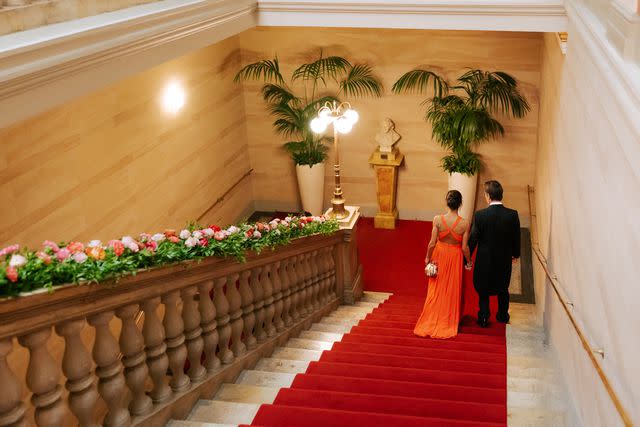
Paul Bauer
My dance card was earmarked for the Vienna Philharmonic’s Ball, one the city’s more famous occasions, and held in the orchestra’s golden palace of music just off the Ring: the Musikverein. The Philharmonic has been holding a ball for more than 80 years, and what began as a fundraiser for the widows and children of orchestra members who perished in the first world war, continues to raise money for the orchestra today.
I entered the Musikverien still jet lagged from my arrival in Vienna but determined to last at least until midnight (the ball wouldn’t begin until 10 p.m.). I had crossed the street from the storied Hotel Imperial, a Luxury Collection, where Empress Sisi, Queen Elizabeth, Mick Jagger, and now I, had stayed. I had one crash waltzing class under my belt, a rented gown hired for the evening, and more hair pins than I could count.
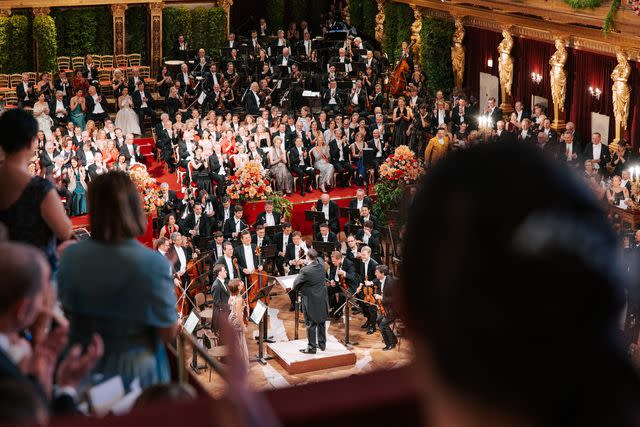
Paul Bauer
The Philharmonic began to play as a procession began, dozens of young women in floor-length white gowns and young men in white ties and tails. They are largely teenagers — 17 and 18 — and they move like lithe characters, gliding in perfect harmony, their steps the studied result of years of practice. They waltz across the dance floors to the strains of Aram Khachaturian’s Masquerade Suite. It’s longing, wistful, demanding, full of questions. My skin puckers in goosebumps; I notice tears on the face of the woman next to me. The hall is silent, as if inhaling together.
The spell of the professional waltzing is broken by a declaration of “Alles Walzer” (“All Waltz”) and all ball guests — around 2,500 of them — are welcomed to the dance floor. The Philharmonic continues to play before themselves joining the party, other musicians picking up for them, alternating between waltzes and show tunes and standards. The slower and less experienced dancers (this writer included) stay in an outer ring while those who spin faster and faster, take to the middle.
The music plays on and time seems to stand still. Couples, lovers, strangers, and taxi dancers (young men available for hired dancing for unaccompanied ladies), swirl around each other. Thousands of fresh flowers perfume the hall with a rosy scent. When the waltz first burst on the scene, the close proximity the dance required of men and women, caused an uproar. Today, still, even in a hall of several thousand people, it still feels intimate, magical, like anything could happen, like it could all burst in an instant. I try to take it all in, and above all, to not look down at my feet, as my dance instructor had schooled me (“You’ll look like an amateur!”).
Can you learn to waltz in one afternoon? Can you learn to speak a language in a day? These things don’t ultimately matter. For visitors, like myself, attending a ball, in a room full of people speaking a language that is not your own, is a window into a different world that stretches far beyond the outlines of a tourist circuit.
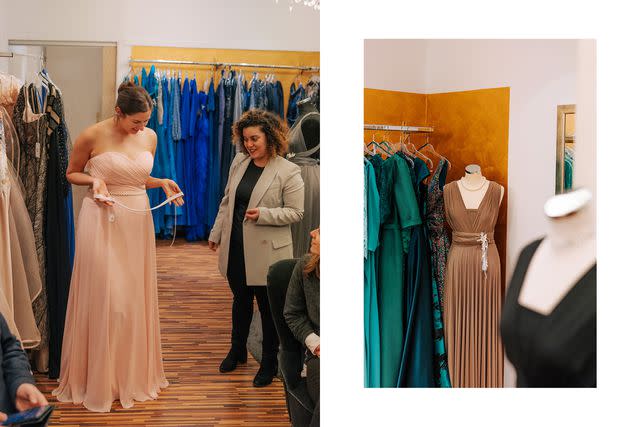
Paul Bauer
Soon it’s midnight and all the guests gather to dance a quadrille. And then, it’s 2 a.m. and the quadrille is repeated, this time with a notable increase in chaos and confusion and people shouting in German and English and French. It’s 3 a.m. and the hall is still bursting with people. My jet lag is a moot point. I’m waltzing — or at least trying to. I talk with a couple who’ve traveled from Virginia to be here. I take a photo of an Austrian couple, but the lighting doesn’t quite come out right. “It’s okay,” the woman tells me. “It’s just to remember the feeling.”
The ball, the night, the city itself, seem to be without beginning or end. Vienna is, after all, where people dance the waltz at the stroke of midnight on New Year’s Eve, turnout by the thousands to a designated ball season each winter, and where classical music is performed nearly 365 days a year. Vienna hangs in the balance of the past and the present, held together, seemingly, by a mutual appreciation for beauty.
It’s getting later all the time. I don’t want the magic to end. I notice a woman slipping a note to a taxi dancer before heading home. A middle-aged couple exchange phone numbers. An elegant older woman who looks like Raquel Welch, sits in tinted glasses, smiling like she’s just fallen in love. An octogenarian couple waltz alone in the upper balcony, a teenage couple moves across the dance floor with sober expressions across their faces.
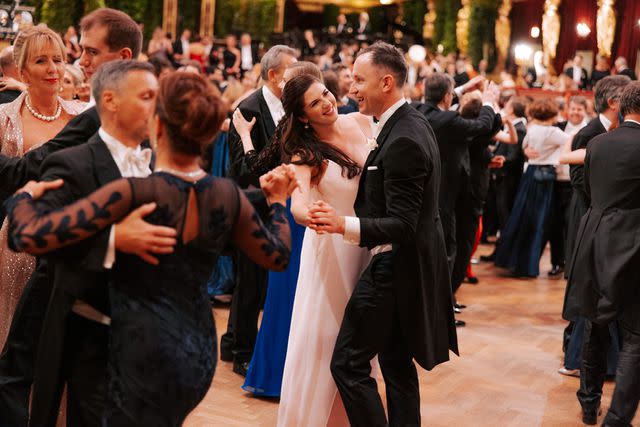
Paul Bauer
Like all fairy tales, this ball would have to come to an end. There would be no coach to turn into a pumpkin, no king angry at the state of my shoes, but there would be a plane to catch, a dress to return, a thousand hair pins to pull out of my hair. The clock struck 5 a.m. Couples moved more slowly across the dance floor. The lights dimmed. The ball, and all of its fairy dust, was ending.
Yet like a fairy tale you read as a child, or an early memory that stays deep within you, it will never entirely end or go away. The memory of the night and its magic will live on, for it’s virtually impossible to escape the sound of the waltz, and particularly Strauss’s "Blue Danube." The waltz, I find, follows me around the world—I hear it months later on an expedition ship crossing the Drake Passage to Antarctica, and in an HBO episode I watch from my couch at home. And just like that, the forest of silver regrows. And the night feels new and your shoes are yet to be tattered. Like a first love or a story from childhood, it will stay with you. If you’re lucky, you’ll never recover.
For Your Next Trip to Vienna
Waltz Classes: Elmayer Dance School
Gown and Tuxedo Rental: Flossmann
Balls: Vienna Philharmonic Ball; Find all other Viennese balls here.
Check in With T+L at Our Favorite Hotels
For more Travel & Leisure news, make sure to sign up for our newsletter!
Read the original article on Travel & Leisure.

